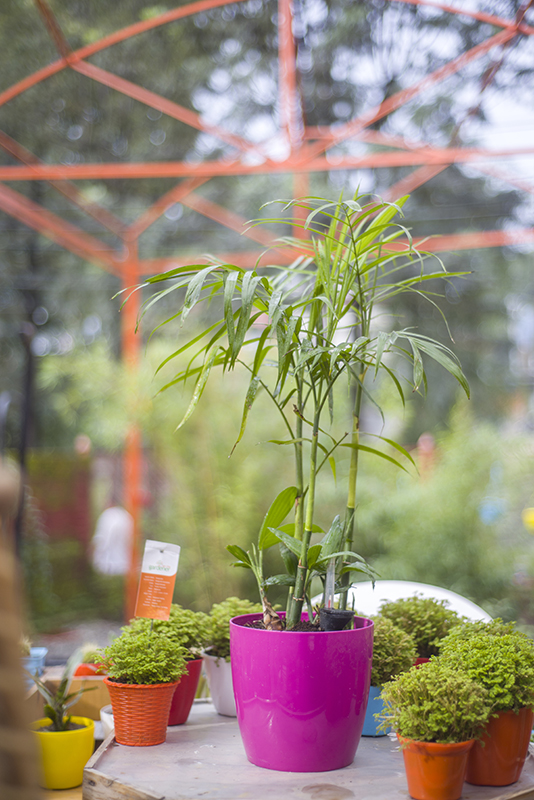House Plants 101
When you purchase an indoor houseplant, you’re not just adding a touch of greenery to your interior spaces. These living breathing life forms also do wonders for your body, mind, and home, and enhance the overall quality of your life.

Here are some benefits of having a houseplant and how you can properly care it.
It helps you breathe easier
When you breathe, you take in oxygen and give out carbon dioxide. Plants, on the other hand, absorb carbon dioxide and give out oxygen during photosynthesis. This reverse behavior makes plants and people ideal natural partners. However, the opposite tends to happen during nighttime. In the absence of sunlight, plants, like people, take in oxygen and give out carbon dioxide. This is where houseplants come in. Studies have shown that certain types of indoor plants take in carbon dioxide and gives out oxygen the entire day. Placing these plants anywhere in your home helps refresh the air 24/7.
The Clean Air Study, a research conducted by NASA, determined that houseplants like the Spider plant and the Rubber plant help eliminate toxins from the air all day, helping you to breathe fresh clean air.
It purifies the air around you
Studies show that plants remove over 85 % of the Volatile Organic Compound (VOC) from the air every day. VOCs constitute substances like formaldehyde, benzene, and trichloroethylene.
A research discovered that houseplants purify the air by pulling the contaminants into the soil where root level microorganisms convert the VOC into food for the plant. Indoor plants like the Snake plant purify the air 24 hrs a day.
It helps you remain focused
A study from the Royal College of Agriculture, in England, found that the attentiveness and the attendance of students were directly proportional to the number of indoor plants that were present in the classrooms. Having houseplants around you tends to help you stay focused and committed.
It relieves stress and helps you stay positive
Plants help us feel relaxed and encourage positive thoughts. Studies have shown that hospital patients who have plants in their rooms often recover quicker than those who do not.
Caring for a living entity such as a plant gives you a sense of purpose and responsibility, which transitions to reward when you eventually see it blossom and grow.
It creates a peaceful ambience
Nature in engraved into our DNA. Natural greenery creates a sense of spiritual harmony which, in turn, creates a fresh and energizing ambience. Plants have since long been used to reduce noises from busy roads and constructions. Houseplants do not only serve as decorative items but also dampen the outside noises by absorbing, refracting and reflecting them.
Having a houseplant in Kathmandu, which is being a concrete jungle, is especially important as it softens the urban noise.
Points to keep in mind for the proper maintenance of your houseplants:
Know your plant
There are many varieties of houseplants available in the market, but not all of them can be cared for in the same way. One of the most important points to keep in mind when you buy a plant is to find out whether it’s a sun or a shade loving plant. This information can be easily obtained from the vendor. This allows you to know whether to place the pot next to a window or away from it. Properly understanding the plant allows you to grow it green and healthy. 
Feed your plant
Plants usually die either due to overwatering or underwatering. Know how much water is appropriate for the plant and how often you need to water them. You can use a rule of thumb to determine this. Dip your finger half an inch onto the soil. As long as it’s damp, you don’t need to water it. But if it is dry, you need to put an appropriate amount of water into it.
Just like we need proper amounts of protein, carbohydrates and other minerals to keep our body healthy and functioning, plants also need the right amount of basic elements, namely, nitrogen, potassium, and phosphorus, to sustain a healthy existence. All of this can be found in a balanced level in commercial fertilizers. These fertilizers come in two forms. The first one is a powdered form that dissolves in water and can be sprayed on the leaves as well as on the soil. The second one comes in a granular form that you can be placed on the soil. These grains slowly mix in with the soil as we water them over time. Fertilizing the plant once every two weeks allows it to be green and healthy.
Clean your plant
It is common knowledge that dead leaves eventually turn to soil with time. Though it is true when it comes to outdoor plants, in the case of indoor plants, the dead leaves can actually hamper its health and growth. Dead leaves encourage fungus buildup. This, in turn, brings out spots and molds in the plant, decreasing its aesthetics.
So remove dead leaves from the pot as soon as you see any. Cleaning the leaves for dust with a water spray or softly with a cloth can encourage the plant to be healthy. Placing small pebbles on the surface also keeps the plant clean and free of unwanted weeds.
For those looking to pick up a houseplant, some of the most common and easy to maintain indoor plants are:
- Peace Lily
- Dragon Tree
- Chinese Evergreen
- Snake Plant
- Bamboo Palm
- Silver Yucca
- Parlour Palm
Some of the tools that you need to properly groom the indoor plants are:
- Sceatures
- Trowel
- Fork
- Water spray bottle
(‘I am the Gardener’ is the retail brand of Khadka Nursery. Everything from plants, pots, gardening tools to fertilizers is available for customers at its stores. Aside from the primary hub at Dhumbarai, it also has a store at Bhatbhateni, Naxal.)


